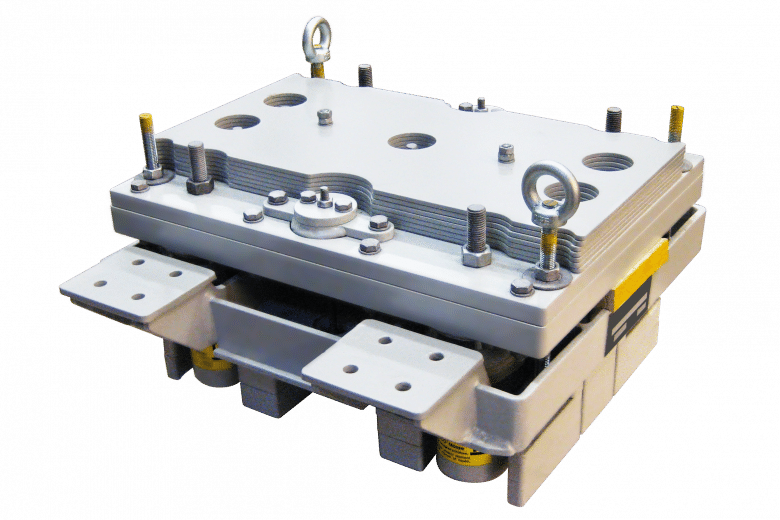
A TMD is a additional damping device which is used in various building applications. Many structures like predestrian bridges, chimneys, light weight and long span floors, staircases are having critical natural frequencies in in the same range as the excitation forces, as well as having low internal damping. For these types of structures a TMD may be used to improve either the walking confort on a bridge by increaed damping of the natural frequencies, or to increase the structural safety for buildings and structures etc.
A typical TMD concists of a mass suspended on steel coil springs and a viscous damper. A TMD can also be designed as a pendulum damper for application types as wind turburbine towers etc.
A TMD can be designed to work either vertically, horisontally or in torsional directions.
A TMD is a customized product and is designed and manufactured according to the given specifications. In each case the TMD is designed to a tuning frequency Ft, which can be found when the natural frequencies of the main structure is known. TMD Mass, TMD damping coeeficient and spring configuration is estimated by optimizing and finding the minumum response for a main system + TMD, by solving the related differential equations.
Finite element analysis may also be used to predict the overall global response with a TMD implemented in the FE model.
TMD: Range from 50 kg-
TMD: Range from 0,5 Hz-30 Hz
TMD frequency: ± 10 %
Color and surface treatment: acc. requirements
Installation type: acc. requirement
During the structural design of the pedestrian bridge at Bagers Plats in Malmö, it became obvious that it would require a TMD, as the lowest vertical eigenfrequency was calculated to 1,85 Hz. A TMD solution was designed. In total 2 TMD’s with a vibration mass of each 340 kg was installed in the mid section of the bridge.
Damping ratio of bridge with blocked TMD:1,5 %
Damping ratio of bridge with TMD:9,0 %
Due to the increased damping of the first vertical modeshape, the movements by walking persons are dampened, and the comfort criteria are met.
Tuned mass dampers are usually implemented in the following typical application types:
This is an NON classical TMD solution, as it consists of a sandwich plate with constraining damping layer. Placement of support points, dimensions of plate results in a tuning frequency similar to the actual bending mode of the floor.
A normal TMD with springs and dampers may also be used.
As the floor is a 2D structure, several TMD’s must be installed in order to reduce responses at a given modeshape.
The preliminary design of a TMD to a pedestrian bridge is based on classical theory using the SDOF method, as the dynamic behaviour of the structure is described by a linear combination of several different harmonic ossicilations. The structure can therefore be transformed into different equivalent mass spring ossicilators each with a single degree of freedom.
Ta gjerne kontakt med oss for mer informasjon